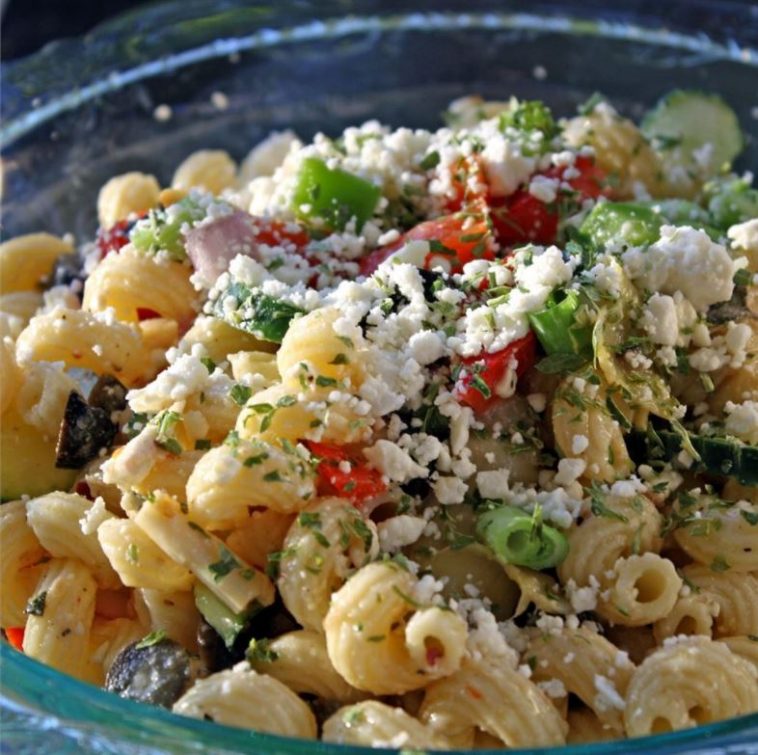Greek Youvetsi

The Cozy Charm of Greek Youvetsi: A Comfort Food Memory
If there’s one dish that instantly transports me back to Sunday afternoons in my grandmother’s sun-filled kitchen, it’s Greek Youvetsi. Just imagine: the warm, spiced aroma of cinnamon mingling with simmering tomatoes, the gentle bubbling of beef stew, and the rich, almost velvety orzo soaking up every ounce of flavor. When I make Youvetsi at home, it’s not just dinner—it’s a journey back to family gatherings, laughter echoing off the tiled walls, and the comforting hug of homemade food. If you’ve been searching for an authentic, soul-soothing Greek Youvetsi recipe, let me tell you: you’re in exactly the right place.
Why You’ll Adore This Greek Youvetsi
There are so many reasons to fall head over heels for Greek Youvetsi, but here are a few that stand out for me:
- It’s pure comfort in a bowl. The combination of tender beef (or lamb!) and chewy orzo pasta in a tomato-rich sauce is the definition of cozy.
- Simple ingredients, big flavors. This classic Greek casserole uses pantry staples like crushed tomatoes, broth, aromatic spices, and olive oil—but the end result tastes like you’ve spent all day cooking.
- Crowd-pleaser, every time. Whether you’re feeding your family on a busy weeknight or having friends over for a slow Sunday dinner, Youvetsi never fails to impress.
- Meal-prep magic. Greek Youvetsi actually gets better as leftovers (if you have any!), making it ideal for make-ahead meals.
Ingredients You’ll Need for Authentic Greek Youvetsi
Let’s talk about what you’ll need to whip up your own batch of Greek Youvetsi—and a few of the little tips I’ve learned along the way.
- 1 lb beef or lamb, cut into cubes
(I love lamb for that richer, earthy flavor, but beef is classic and a bit milder—both work beautifully!) - 2 cups orzo pasta
(Orzo is the soul of this dish; I always reach for the small, rice-shaped kind that soaks up all the sauce.) - 1 onion, chopped
(Sweet yellow onions add a lovely base flavor. Dice it up fine so it sort of melts into the sauce.) - 2 cloves garlic, minced
(One clove is never enough, right?) - 1 can (14 oz) crushed tomatoes
(You can use fresh tomatoes in summer, but canned works just as well for deep, cozy flavor.) - 2 cups beef or vegetable broth
(Use low-sodium if you want to control saltiness.) - 1 teaspoon ground cinnamon
(This is the “secret” that makes Youvetsi unmistakably Greek—trust me!) - 1 teaspoon dried oregano
(Greek or Mediterranean oregano is best for that herby punch.) - Salt and pepper, to taste
(A generous sprinkle of each!) - Olive oil, for cooking
(Good extra-virgin olive oil adds richness and a peppery finish.) - Parmesan cheese, for serving (optional)
(Traditionalists might use Greek kefalotyri, but Parmesan or pecorino is perfect.)
Step-by-Step Guide: Making the Perfect Greek Youvetsi
Ready to get cooking? Here’s how we’ll create this classic Greek Youvetsi together:
Sauté the aromatics.
In a large pot, heat a glug of olive oil over medium. Add the chopped onion and garlic. Sauté until everything’s soft and golden—you want that sweet onion scent drifting through your kitchen!Brown the meat.
Add your beef or lamb cubes (I usually pat them dry for a better sear) and brown on all sides. Don’t rush this step—those caramelized bits add so much flavor.Bring on the sauce.
Stir in the crushed tomatoes, broth, cinnamon, oregano, salt, and pepper. Mixing it all together fills the kitchen with that signature Greek Youvetsi perfume!Simmer away.
Lower the heat, cover, and let the meat simmer gently for about an hour, or until it’s fork-tender. (This is when I sneak a slice of bread to dip in the sauce for a little “quality control.”)Add the orzo.
Once the meat is juicy and almost falling apart, stir in the orzo pasta. Keep everything at a gentle simmer and cook for 15-20 more minutes, stirring occasionally—the orzo will absorb most of the liquid and turn luscious.Serve & enjoy!
Spoon hot Youvetsi into bowls and finish with a generous sprinkle of grated Parmesan (or kefalotyri, if you have it). And trust me—don’t skip the cheese!
My Secret Tips and Tricks for Greek Youvetsi Success
Over the years, I’ve picked up a few tricks for making this classic Greek casserole extra delicious:
- Brown the meat well. Don’t overcrowd the pan, or you’ll get steam (not a good sear). Crusty edges = more flavor.
- Use the best olive oil you can. A fruity, peppery extra-virgin type really shines in Greek recipes.
- Adjust the broth. Orzo loves to absorb liquid—if your Youvetsi looks dry, add extra broth a half-cup at a time.
- Stir, but not too much. Too much stirring can break up the orzo. I check the pot every few minutes once the pasta goes in, just to keep things moving.
- Let it rest. Greek Youvetsi thickens as it cools. If it looks soupy at first, don’t fret!
Creative Variations and Ingredient Swaps for Greek Youvetsi
Want to make Greek Youvetsi your own? Here are some of my favorite tweaks (and some reader favorites, too!):
- Try chicken instead of beef or lamb, for a lighter (but still cozy) take.
- Make it vegetarian: Skip the meat, double up on the veggies (think mushrooms, carrots, or zucchini), and use veggie broth.
- Use whole-wheat orzo for a heartier, nutritious twist.
- Fresh herbs: Swap oregano for fresh basil or thyme in summer for a subtly different Greek casserole flavor.
- Seasonal ingredients: Stir in spinach, roasted red peppers, or sun-dried tomatoes for extra color and zing.
How to Serve and Store Your Greek Youvetsi
Honestly, Greek Youvetsi is a “one bowl, done” wonder—but here are some serving and storage tips I swear by:
- Serve hot, right from the pot, with that essential handful of cheese.
- Pair with a crisp Greek salad and some crusty bread to mop up every last bit of that spiced tomato sauce.
- Leftovers? Store in an airtight container in the fridge for up to 3 days. Heat gently on the stove with a splash of broth if it thickens too much.
(Pro tip: Greek Youvetsi freezes beautifully—just bring it back to life with more broth when you reheat.)
FAQs: Your Top Questions About Greek Youvetsi Answered
1. Can I use rice or another pasta instead of orzo in Greek Youvetsi?
Absolutely! While orzo is traditional, you can swap in rice or another small pasta shape (like pastina). Adjust the liquid and cooking time as needed.
2. What cut of beef works best for Youvetsi?
I love beef chuck or stew meat—they get super tender after simmering. Lamb shoulder is also fantastic for an authentic Greek Youvetsi flavor.
3. Can I make Greek Youvetsi ahead of time?
Yes! In fact, Youvetsi tastes even better after resting. Reheat gently with a splash of broth, and the flavors will shine.
4. Is there a gluten-free version of Greek Youvetsi?
You bet. Just use gluten-free orzo or a similar small gluten-free pasta. Keep an eye on the liquid, as some gluten-free pastas cook quicker!
5. What kind of cheese goes best on Youvetsi?
While Parmesan is convenient, Greek kefalotyri or pecorino adds a sharper, salty finish—so good!
If you try this Greek Youvetsi recipe, I’d love to hear how it turned out for you. Drop a comment below or tag me in your photos (#YouvetsiMagic). Here’s to cozy meals, family traditions, and a taste of Greece in your own kitchen. Kali orexi—happy eating, friends!





